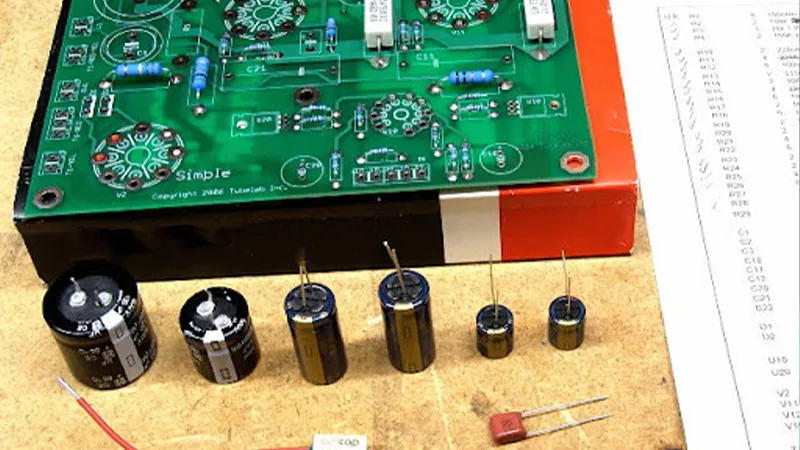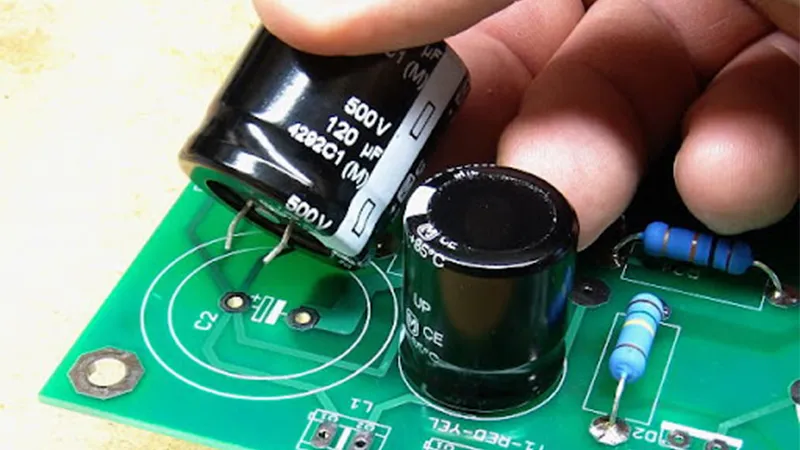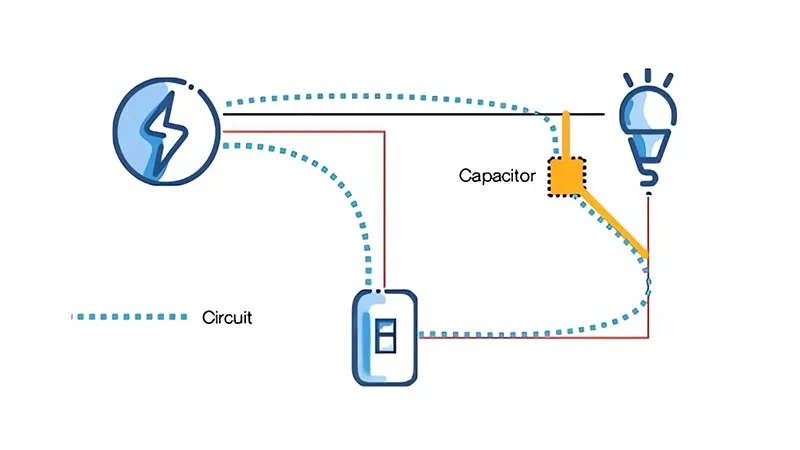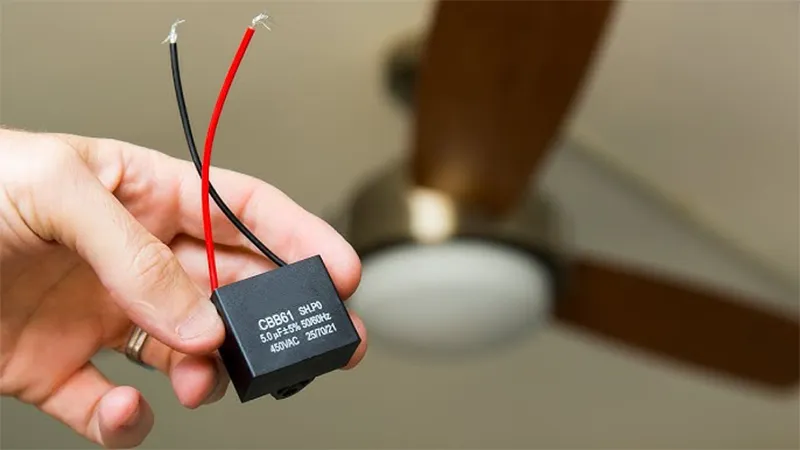Capacitors are essential electronic components used in various devices and systems, from amplifiers to air conditioning units. Proper installation of capacitors ensures optimal performance and longevity of your equipment.
In this comprehensive guide, we will walk you through the step-by-step process of installing different types of capacitors in various applications. Whether you’re a DIY enthusiast or a professional technician, this article will equip you with the knowledge to install capacitors like a pro.
Understanding Capacitors
Before diving into the installation process, let’s first understand what capacitors are and how they work. Capacitors are passive electronic components that store and release electrical energy. They consist of two conductive plates separated by an insulating material known as a dielectric.
When a voltage is applied across the plates, an electric charge accumulates, creating an electric field between them. This stored energy can be discharged when needed, making capacitors useful for various applications such as filtering, energy storage, and timing circuits.
Types of Capacitors

There are several types of capacitors available, each designed for specific purposes. Some common types include ceramic capacitors, electrolytic capacitors, tantalum capacitors, and film capacitors. The choice of capacitor depends on factors like capacitance value, voltage rating, size, and temperature stability.
Understanding the characteristics of different capacitor types is crucial for selecting the right one for your application.
How to Install Capacitor for Different Circuits or Devices

How to Install a Capacitor to an Amplifier (Amp)?
- Turn off the amplifier and disconnect it from the power source.
- Identify the positive and negative terminals on the capacitor.
- Connect the positive terminal of the capacitor to the positive terminal of the amplifier.
- Connect the negative terminal of the capacitor to the ground (chassis) of the amplifier.
- Securely fasten the connections using appropriate terminals or soldering.
How to Install a Capacitor on an Air Conditioning (AC) Unit?
- Turn off the power supply to the AC unit and discharge any residual electricity.
- Locate the capacitor within the AC unit, usually near the compressor or fan motor.
- Note the wiring configuration of the old capacitor.
- Disconnect the wires from the old capacitor and remove it from the unit.
- Install the new capacitor, ensuring proper orientation and wiring according to the manufacturer’s instructions.
- Secure the capacitor in place and reconnect the wires, double-checking for correct polarity.
How to Install a Run Capacitor?
- Turn off the power to the device or system where the run capacitor will be installed.
- Locate the run capacitor terminals and identify the common, start, and run terminals.
- Connect the common terminal of the capacitor to the corresponding terminal on the device.
- Connect the start and run terminals of the capacitor according to the wiring diagram or instructions provided.
- Ensure all connections are secure and insulated to prevent short circuits.
How to Install a Hard Start Capacitor?
Follow similar steps as installing a run capacitor, but ensure compatibility with the compressor or motor.
Hard start capacitors are typically used to provide an extra boost during motor startup, improving efficiency and reducing wear.
How to Install a Capacitor on a Circuit Board?
- Identify the designated capacitor pads on the circuit board.
- Align the capacitor with the pads, ensuring correct polarity.
- Solder the capacitor leads to the pads, taking care not to overheat the components.
- Trim any excess leads and inspect the solder joints for proper connection.
How to Install Audio Capacitor?
- Determine the power requirements of your subwoofer system.
- Select a capacitor with appropriate capacitance and voltage rating to handle the power demands.
- Follow the installation instructions provided by the manufacturer, typically involving connection to the amplifier’s power supply.
How to Install a Farad Capacitor?
Farad capacitors, also known as supercapacitors, are used for high-energy storage applications.
Install Farad capacitors according to the manufacturer’s specifications, considering factors like charging/discharging rates and temperature limits.
How to Install a Power Capacitor?
A power capacitor is used in various applications to smooth out voltage fluctuations and provide a stable power supply. Here’s how to install it:
- Turn Off Power: Ensure the device you’re working on is turned off and unplugged from the power source.
- Identify Terminals: Locate the positive (+) and negative (-) terminals on both the capacitor and the device.
- Connect Wires: Connect the positive terminal of the capacitor to the positive terminal of the power supply. Connect the negative terminal to the ground or negative terminal of the power supply.
- Secure Connections: Use soldering or terminal connectors to ensure the wires are securely attached.
- Mount Capacitor: Mount the capacitor in a stable position within the device, using brackets or clamps if necessary.
- Test: Restore power and test the device to ensure the capacitor is functioning correctly.
How to Install an Anti-Flicker Capacitor?
Anti-flicker capacitors are often used in automotive lighting systems to prevent flickering. Here’s how to install one:
- Turn Off Power: Make sure the vehicle’s power is turned off.
- Locate Headlight Wiring: Find the headlight or lighting system wiring where the capacitor will be installed.
- Connect Capacitor: Attach the anti-flicker capacitor to the headlight wiring harness. The capacitor typically has two connectors that should match the headlight’s wiring.
- Secure Connections: Ensure all connections are tight and secure to prevent disconnections due to vibrations.
- Test: Turn on the headlights to check for flickering. If the lights are stable, the installation is successful.

How to Install a Capacitor for a Smart Switch?
Capacitors for smart switches help stabilize the power supply to the switch. Here’s a simple installation process:
- Turn Off Power: Turn off the power at the circuit breaker to avoid electrical shock.
- Access Wiring: Remove the switch cover plate and take out the existing switch.
- Identify Wires: Identify the line (hot), load, neutral, and ground wires.
- Connect Capacitor: Attach the capacitor to the neutral and hot wires. This is usually done by connecting the capacitor’s wires in parallel with the switch.
- Install Switch: Reattach the switch, ensuring all wires are connected correctly.
- Test: Turn the power back on and test the smart switch to ensure it operates smoothly.
How to Install a Capacitor in a Water Pump?
Capacitors in water pumps are used to start the motor and keep it running smoothly. Follow these steps:
- Turn Off Power: Ensure the water pump is disconnected from the power supply.
- Access Capacitor Location: Open the housing of the water pump to locate the old capacitor.
- Disconnect Old Capacitor: Note the wiring configuration, then disconnect and remove the old capacitor.
- Connect New Capacitor: Attach the new capacitor following the same wiring configuration. Typically, this involves connecting to the start and run terminals of the motor.
- Secure Capacitor: Mount the new capacitor securely within the housing.
- Test Pump: Reassemble the pump housing, restore power, and test the pump to ensure proper operation.
How to Install a Capacitor to a Speaker?
Adding a capacitor to a speaker system can improve sound quality by filtering frequencies. Here’s how to do it:
- Turn Off Power: Ensure the audio system is turned off.
- Access Speaker Wiring: Remove the speaker from its enclosure to access the wiring.
- Choose Capacitor: Select a capacitor with the appropriate capacitance value for your speaker setup.
- Connect Capacitor: Solder the capacitor in series with the speaker’s positive lead. This typically means one end of the capacitor goes to the positive terminal of the speaker, and the other end connects to the amplifier’s positive output.
- Secure Connections: Ensure all solder joints are solid and insulated to prevent short circuits.
- Test Sound: Reassemble the speaker, turn on the audio system, and test the sound quality.

How to Install a Fan Capacitor?
Fan capacitors are essential for the proper operation of ceiling and pedestal fans. Here’s how to install one:
- Turn Off Power: Switch off the power supply to the fan.
- Access Capacitor: Open the fan’s housing to locate the capacitor.
- Note Wiring: Take note of the capacitor’s wiring connections before removal.
- Disconnect Old Capacitor: Remove the old capacitor by disconnecting its wires.
- Install New Capacitor: Connect the new capacitor in the same configuration as the old one. Typically, this involves connecting to the fan’s motor leads.
- Secure and Close: Secure the capacitor in place, reassemble the fan housing, and ensure all connections are tight.
- Test Fan: Restore power and test the fan to ensure it operates correctly.
Additional Tips and Considerations
Always follow safety precautions when working with electrical components.
Double-check connections and polarity before applying power.
Use high-quality capacitors from reputable manufacturers to ensure reliability and performance.
Consult the device’s manual or seek professional assistance if you’re unsure about the installation process.
Conclusion
Congratulations! You’ve now mastered the art of installing capacitors in various applications. Whether you’re enhancing the performance of your audio system with a capacitor or ensuring smooth operation of your air conditioner, the knowledge gained from this guide will serve you well. Remember, proper installation is the key to unlocking the ultimate potential of capacitors in your electronic devices and systems.




















